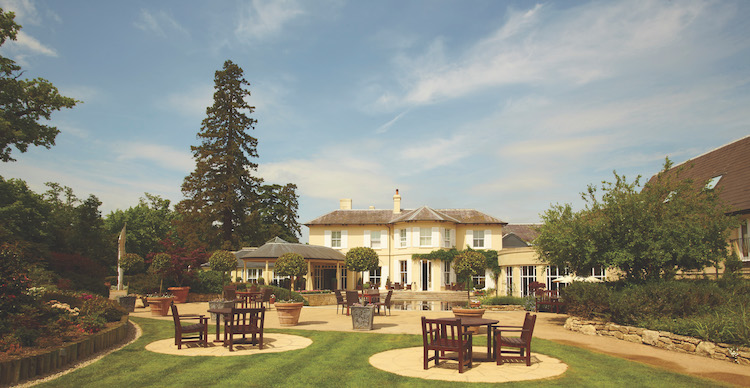
This article is the fourth in a series designed not to provide ‘A N Other’ opinion about a chef’s output, to be lost in the now sea of increasing ‘noise’ about top end dining. This is something slightly different. In this article the chef will analyse each of their dishes sampled against the five criteria used by Michelin for awarding a Michelin star. How so? Discerning foodies will recall that at The Michelin Guide GB&I launch event for the 2018 Guides, a slide was briefly discussed by Michael Ellis (WW Director of Michelin Guides), which for the first time highlighted the five criteria followed by inspectors in the awarding of Michelin Stars. Michael Ellis confirmed these under interview on that day, as a reminder he explained:-
“The first and most important criteria is the ingredients, all great cuisine starts with great product – the actual product itself is considered for freshness, quality, flavour and texture and so on. The second criteria is mastery of cooking technique. The third criteria is equilibrium and harmony in flavours; the plate must be in balance, so the sauce is not, for example, overpowering the flavour of the fish or that the seasoning of the dish is found to be exactly as it should be. The fourth criteria is regularity (or consistency) and this means starter, main and dessert are all of the appropriate standard and that each are also consistent over time. Finally, value for money is the fifth criteria.”
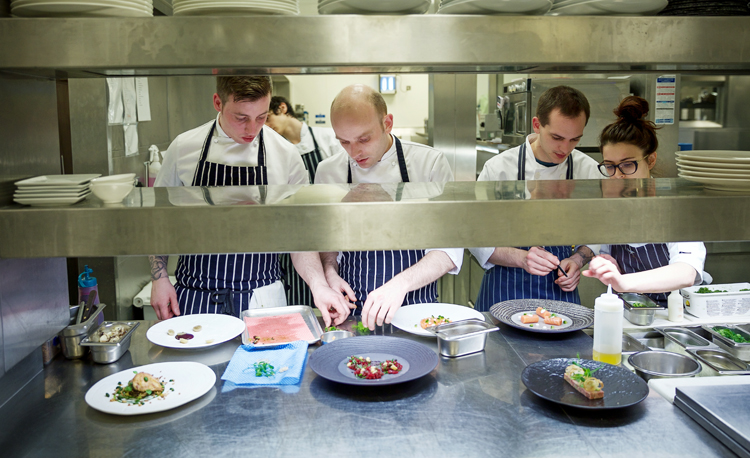
After a progressive spell in kitchens of increasing merit, Robby Jenks found himself working 16-18 hour days for three and half years in Michael Caines kitchen at Gidleigh Park, a dedication which enabled him to progress through the sections. After time under chef Martin Burge at Whatley Manor, Robby returned to Gidleigh as senior sous chef for a further two years. A Head chef position at Amberley Castle beckoned followed by arriving at The Vineyard near Newbury around the turn of 2016. Robby is now firmly established in the kitchen and seeking that elusive Michelin star to reward the restaurant’s (he and his team’s) consistent creative efforts in their own right.

The dishes to be analysed by the chef are each of four house signatures – the salmon, the shellfish raviolo, the foie gras and the cod.
Loch Duart Salmon is farmed in Scotland, which I first started using at Gidleigh Park, when the wild comes in to season we use that quality. Salmon, dill, cucumber, wasabi are naturally a good combination. The heat from the wasabi in the cold form of an ice cream is fresh and interesting and a different take on enhancing and bringing these elements together while using a temperature contrast.
The Salmon is cured for eight hours then rolled into a ballotine, wrapped in cling film whole, then heated in a water bath (sous vide) at forty degrees for just ten minutes to break down the proteins. This gentle process enhances the texture, giving it a buttery, melt in the mouth sensation. The outside of the Salmon is blowtorched to give some smoky, charcoal flavours, then a tiny bit of sea salt added. Overall the final texture is exactly what we desire and that for me is a crucial factor in a successful salmon dish of this style.
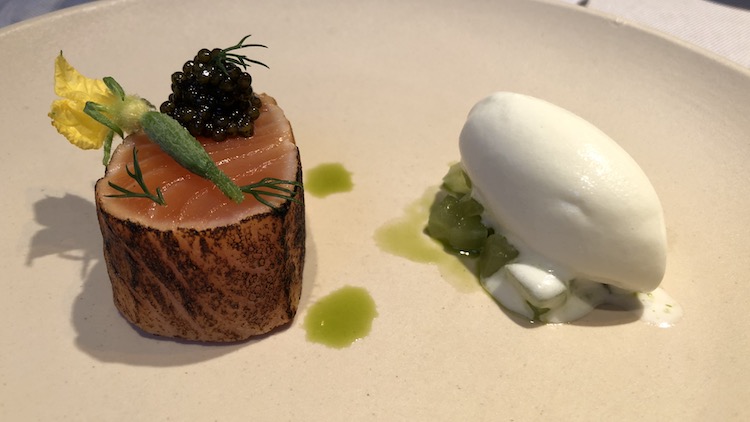
In terms of consistency, the kitchen will seek to minimize downside risk of inconsistency. What does that mean? Well if I cure something as preparation in the morning the opportunity for consistency is very high, whereas if I ask one of the team (or even I personally) to season something to order during service, then the downside risk of inconsistency is naturally that much higher. So the result of that, as a mantra, is that preparation time in the mornings is fundamental to ensure the precise elements required in any given service are executed in exactly the right way. So we tell any new chef that 8.30am to 11.30am each morning is the most intense time in the kitchen, work hard during those hours then we have the smoothest running, efficient and effective kitchen during service, which is (most importantly) at the closest point of delivery to the end customer.
In terms of documenting practices, procedures and methods I have a collection of databases. This is as much a reflection of my enthusiasm and passion for my craft, as it is a way of running my kitchen (smiling). I have a large collection of recipes and methods from various sources. We will create new recipes leaning upon previous experiences and the associated education, however, every recipe (and every dish) is created from scratch, trusting our creative mind-set and experiences to build a unique dish.
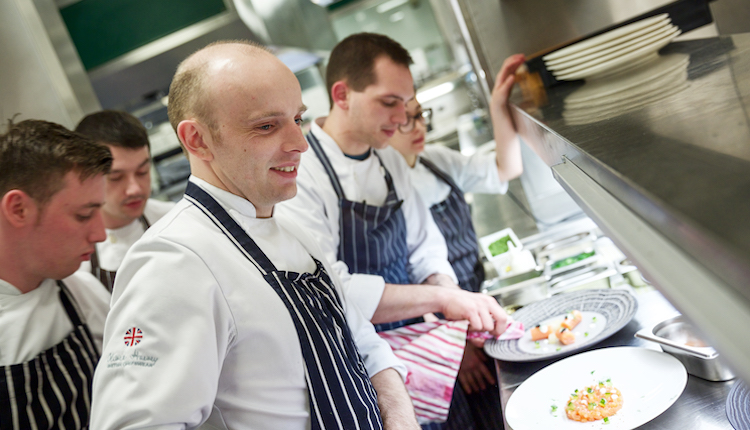
I do document the final recipe of a created and developed dish but the way I get to that recipe is instinctive and comes naturally, partly through past experience and partly through a natural thought process. So at the start of the Salmon dish, I wanted to do a cure so I’d weigh out a kilo of salt, a quantity of sugar and so on. Whatever was actually used in preparing the fish by hand and eye would equate to a first natural step, we’d taste it and see whether more or less seasoning was required or more or less time sous vide, until we reached the perfect end product. At that point the recipe is documented and ready to go on the menu.
When you write down what I say about the final dish it sounds quite a black and white science whereas originally reaching the method, process and practice (recipe) is instinctive to the kitchen team. From a fish cookery perspective, the Salmon from Loch Duart is a good example as the size of fish is so consistent over the years that little variance in cooking timings is ever required, again lowest downside risk of inconsistency to customers for the final dish on a plate.
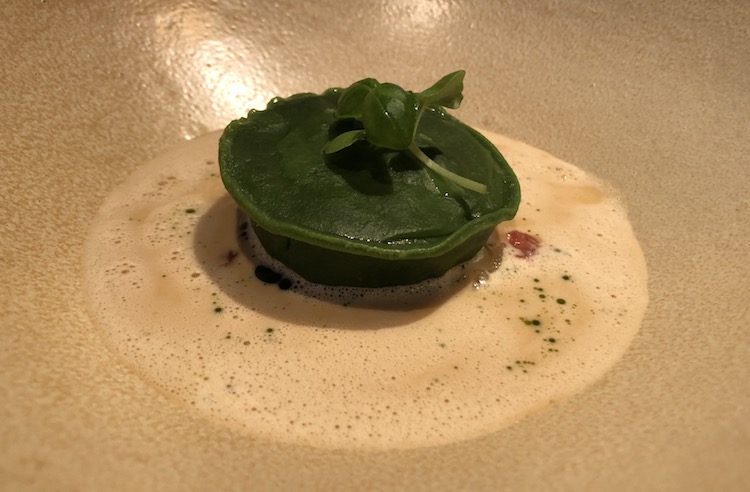
The shellfish raviolo has become a key signature of the house. I’ve always loved a good bisque and every Michelin two star kitchen I’ve worked in made a great bisque (such as Gidleigh, Whatley Manor). Personally, I prefer a sweeter compared to a more bitter style, so to achieve that we use langoustine bones. The mousse inside the raviolo is a combination of langoustine, scallops and a little crab. Scallops, a little cream and egg are blended, langoustines chopped after blanching, we pick out crab meat – mix these together with lemon and chopped basil and we can prepare that in batch for say a week.
The key is the bisque, were crab the majority meat then it would be a crab bisque which I move away from for a couple of reasons – I prefer the flavour of the langoustine based bisque. In addition, the extent of those micro-bones in crab are hard to extract for the dish to be just right which again refers back to the consistency mantra.

The foie gras dish, we chose grapes to work with the dish as they have the sweetness but also through lightly pickling, a little tartness to cut the richness and balance the dish. Hazlenut and pain d’espice add flavours and texture contrasts. There’s sweet and sour and some spice in the sauce.
Foie gras has got better and better and we’ve worked hard to source the best product. I’ve had a relationship with the supplier for seven or eight years. Ben, who I’ve known since my Gidleigh days and his Oakleaf days, sources directly from Rungis Market. His vegetables are excellent as well and with both these and the Rougie foie gras, my experience tells me we are sourcing some of the best consistent product the market has to offer.
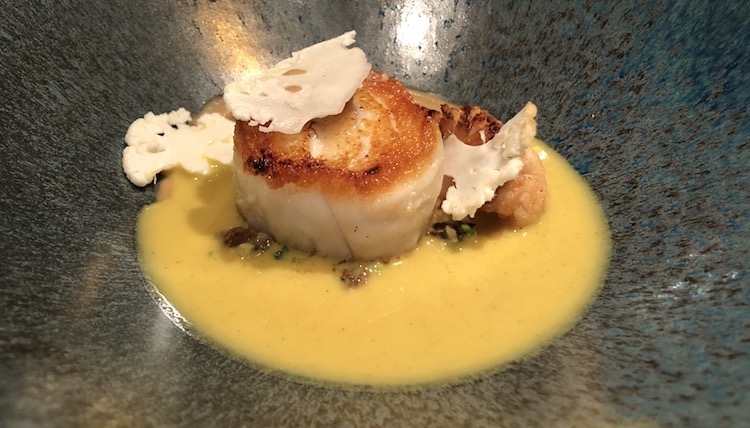
For the cod dish, the fish is sourced from Brixham via a long standing supplier (Johnny) from Flying Fish. You have to be so careful with fish in the UK as the standard varies from excellent to terrible and everything in between, building the relationships with the right suppliers is essential with fish dishes. I do know this company covers a wide spectrum of Michelin starred restaurants up and down the country.
The cod is lightly salted to tighten it up before rolling it and putting in the fridge for six to eight hours, if we didn’t salt the likelihood would be of the flakey fish falling apart in the pan. So the preparation in the morning will mean it is ready for dinner service that day. The cauliflower is served in serveral different ways – roasted, raw, shaved, pickled and pureed in a light curry sauce for depth of flavour and raisons for sweetness and richness.
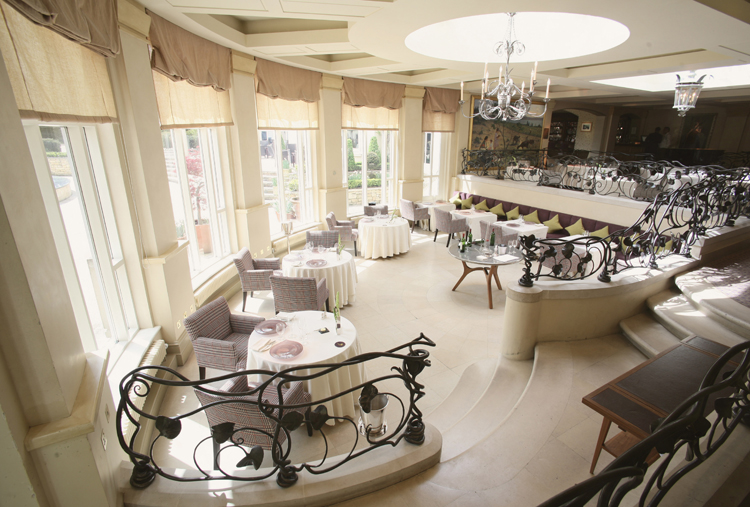
Overall, The Vineyard offers a form of new classical restaurant with food engineered and produced in a thoughtful, intelligent (but instinctive) manner to deliver the highest quality ingredients with a depth of flavour. Dishes exhibit first class provenance with some interesting modern twists on balance and harmony, demonstrating progressive classical thinking. Meticulous attention to consistency through accurate preparation ensures a customer is very rarely surprised or disappointed. This process rolls into the nature of the multi-stage cooking processes and techniques which fit within the Michelin scope and spectrum of this article.
A guest will also consider the context of the hotel’s attraction as a wine and food destination with the “Judgement of Paris” central to the diners’ overnight stay experience. More on this in a separate piece to follow in June 2018 but be assured, the food alone is reason enough to visit The Vineyard, and to appreciate the efforts of Robby Jenks and his kitchen team.



